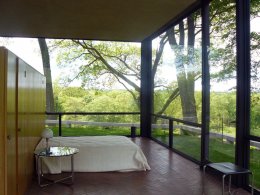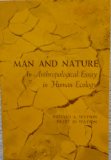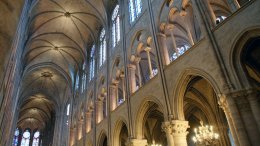Ecology of Human performance
Human ecology – the study of how our environment affects us, and how we in turn affect our environment – is a topic near and dear to our hearts at H&H. So when AIA Seattle’s Committee on the Environment (COTE) approached us to present to their members about human ecology and high performance building we were happy to oblige. The group recently packed into the conference room of our Seattle office for a presentation by H&H’s Sam Hagerman.
The study of human ecology in architecture and construction is focused on how buildings affect occupants. We look to inside/outside connections as a measure of “positive” impact of the built environment on people: how much daylighting, natural ventilation, or visual access to the outside does a given building provide?
Much of this jibes well with the high performance, low-load approach to building (e.g. Passive House) with its emphasis on daylighting, passive solar design, and indoor air quality. But one objection to Passive House buildings made in the name of human ecology is that superinsulated, airtight structures disconnect us from nature. My doctor actually debated me on this very subject when I was under the knife recently. (Seriously. I think it was a distraction technique, but I sure felt at a disadvantage in the conversation!) My doc’s contention was that you should be able to hear the rain hit your roof and the wind blow through the trees when you’re inside. We shouldn’t seal ourselves off from the outside.
My doctor actually debated me on this very subject when I was under the knife recently. (Seriously. I think it was a distraction technique, but I sure felt at a disadvantage in the conversation!) My doc’s contention was that you should be able to hear the rain hit your roof and the wind blow through the trees when you’re inside. We shouldn’t seal ourselves off from the outside.
Of course, this argument assumes that you live in the country where sounds of nature prevail, not the city where interior peace and quiet may be more highly valued. But he raises an important point. The fact is that the ever-increasing imperative to reduce building energy consumption is driving us toward thicker walls, triple pane windows, and airtight construction.
Nevertheless, the notion that we are now building virtual thermoses, cut off from nature and the outside is false. As Sam emphasized in his presentation to the COTE, when we look through a human ecologist’s lens and speak of a building’s access to nature we’re fundamentally speaking of access to fresh air and natural light.
In the old days, architects and builders provided this access thusly:
Notre Dame certainly provides air, light, and inspiration. But nobody’s going to try to heat that space in the winter. Its 14th century connection to light and air also brings thermal discomfort whenever temperatures in Paris are cold.
Here’s how we did it in the mid-20th century:
The Glass House, designed by Philip Johnson and built in 1949 in New Canaan, Connecticut has incredible connections to its surrounding landscape. But its single pane glass envelope is infamous for poor performance, daring the Connecticut winter to do its worst on occupants.

|
Man and Nature: Anthropological Essay in Human Ecology Book (Harcourt Brace College Publishers)
|
